Anthony and his family visit the Chelonian Research Institute
If you ask my wife, she would tell you that I am not the most organized person in world. Keep in mind, this is partly due to the fact that she is extraordinarily organized and I tend to be more of a big-picture thinker who pays more attention to the macro view of things, sometimes neglecting those fine details she lives for. As many of us know, opposites attract. I am eternally grateful to have her in my life, as she, much like my detail-oriented partner, theTurtleRoom founder Steve Enders, compliment my style greatly. (Editor’s Note: Steve’s wife would claim he is somewhere between detail-oriented and big-picture.)
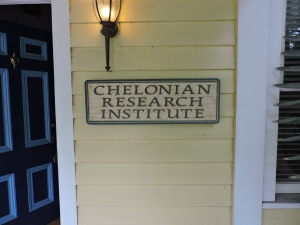 On our recent trip to Florida, two things went awry; both fittingly representing the majority of what I was responsible for in planning our trip. The first mishap was our rental car. Please, never book your rental through Advantage in Orlando, FL. More importantly, the second planning miscue was my trip to the Chelonian Research Institute in Oviedo, FL. With much help from Adam Roberts, a good friend of theTurtleRoom, and our very own Gerard Siatkowski, I had secured an appointment to meet Dr. Peter Pritchard at the institute.
On our recent trip to Florida, two things went awry; both fittingly representing the majority of what I was responsible for in planning our trip. The first mishap was our rental car. Please, never book your rental through Advantage in Orlando, FL. More importantly, the second planning miscue was my trip to the Chelonian Research Institute in Oviedo, FL. With much help from Adam Roberts, a good friend of theTurtleRoom, and our very own Gerard Siatkowski, I had secured an appointment to meet Dr. Peter Pritchard at the institute.
Well, as my wife would tell you was no surprise to her, I somehow managed to mess up the date. On Monday, while at Gatorland in Orlando, I decided to text Adam and verify our Wednesday appointment at the institute. No surprise to my wife, I had mixed the date up, thus ruining the chance for Gerard and I to meet Adam and Dr. Pritchard together. The appointment was actually for Tuesday, the very next day, and too quick of a turnaround for Gerard to make changes in his schedule. This would surely go down as a new low for a person who does make an honest mistake from time to time. Even after apologizing to Gerard profusely and with his assuring me he didn’t mind, I still felt horrible.
The next day came and, after hours of begging, my wife Shannon decided to come along with our one-year old-Daughter, Cambria. As we arrived, in front of the beautiful yellow building I have seen in photos so many times, Shannon and I scrambled to gather two books to be signed, our daughter’s stroller and diaper bag, and two cameras.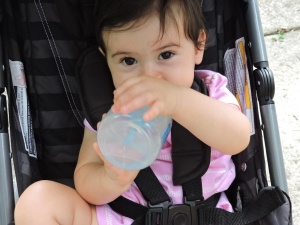 During our haste, I look up, and across the busy road, I see him. A statuesque man approaching the roadside, from the other side of the street, about to cross and greet my family. As a very large man, I am rarely intimidated. The moment awaiting the introduction, as Dr. Pritchard crossed the road, provoked a bit of anxiety in me.
During our haste, I look up, and across the busy road, I see him. A statuesque man approaching the roadside, from the other side of the street, about to cross and greet my family. As a very large man, I am rarely intimidated. The moment awaiting the introduction, as Dr. Pritchard crossed the road, provoked a bit of anxiety in me.
Immediately, that all went away. We were invited into the Chelonian Research Institute and Dr. Pritchard began showing me his enormous collection. Imagine a man who wrote the most important book on turtles in 1967 and all of the adventures he has had in the 48 years since. Imagine all of the artifacts and priceless specimens that could be accumulated in that time. Then, multiply that idea tenfold. His collection is immense and utterly impressive in every way. One highlight of that conversation was when Dr. Pritchard showed us a beautiful Geometric Tortoise shell, Psammobates geometricus, he had displayed on the mantle.
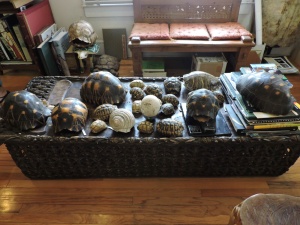 Soon after Dr. Pritchard began showing my family his collection of preserved shells and artifacts in the facade of the yellow building, Adam joined us to assist with the tour. The gentlemen took us upstairs to views fragments from a Pinta Island Tortoise, the same species as the late Lonesome George, an icon in conservation. During the tour of the upper level of the iconic yellow house, Dr. Pritchard pointed to an oil portrait of his mentor, Archie Carr, which was a special moment for me since I have read the detailed accounts of what Dr. Carr meant to him. Of all the paintings in the house, this one spoke to me the most because I was a portrait painter in college. I was interested to see many oil paintings in the upper level, most of which had chelonian subjects.
Soon after Dr. Pritchard began showing my family his collection of preserved shells and artifacts in the facade of the yellow building, Adam joined us to assist with the tour. The gentlemen took us upstairs to views fragments from a Pinta Island Tortoise, the same species as the late Lonesome George, an icon in conservation. During the tour of the upper level of the iconic yellow house, Dr. Pritchard pointed to an oil portrait of his mentor, Archie Carr, which was a special moment for me since I have read the detailed accounts of what Dr. Carr meant to him. Of all the paintings in the house, this one spoke to me the most because I was a portrait painter in college. I was interested to see many oil paintings in the upper level, most of which had chelonian subjects.
The tour of the upper level continued, as we were shown several walk-in closets that contained preserved specimens of some of the rarest species in the world. Whole shelves and large plastic tote containers were used to house single species. Some of the genera contained in these areas included Sacalia, Gopherus, Pyxis, Astrochelys, Chelus, Geochelone, Kinosternon, and Manouria just to name a few. Before leaving the house to view the live collection, Dr. Pritchard stopped to show us some preserved Herrera’s Mud Turtles, Kinosternon herrerai, equipped with miniature musical instruments and preserved to stand on their hind legs. I had seen similar antiques at the Hamburg Reptile Expo in Pennsylvania, but never would have been able to identify whether or not those were rare species like the ones on display at the Institute.
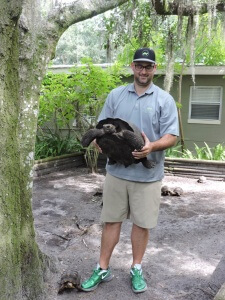 Once outside, we stopped to see the box turtle habitat. There were a few species here, most notably a female Yucatan Box Turtle, Terrapene carolina yucatana (or Terrapene mexicana yucatana), that Dr. Pritchard estimated as being more than 80 years-old. While viewing the box turtles, Dr. Pritchard went on a hunt to find a container of earthworms so we could watch them in action. We knew we didn’t have all day, so we moved on. We almost had to pull the doctor away from his place observing the turtles feeding, as if he was witnessing this for the first time. His passion and love for the animals was truly undeniable and awe-inspiring.
Once outside, we stopped to see the box turtle habitat. There were a few species here, most notably a female Yucatan Box Turtle, Terrapene carolina yucatana (or Terrapene mexicana yucatana), that Dr. Pritchard estimated as being more than 80 years-old. While viewing the box turtles, Dr. Pritchard went on a hunt to find a container of earthworms so we could watch them in action. We knew we didn’t have all day, so we moved on. We almost had to pull the doctor away from his place observing the turtles feeding, as if he was witnessing this for the first time. His passion and love for the animals was truly undeniable and awe-inspiring.
We then crossed back over the road to visit the spot where most of the live animals were kept. To name a few, there were Galapagos Tortoises, Geochelone nigra, Redfoot Tortoises, Geochelone carbonaria, Alligator Snapping Turtles, Macrochelys temminckii, Florida Snapping Turtles, Chelydra serpentina, Midland Painted Turtles, Chrysemys picta marginata, Mexican Giant Musk Turtles, Staurotypus triporcatus, and Rio Grande Cooters, Pseudemys gorzugi. I was able to pick up a juvenile Galapagos Tortoise and a large adult Alligator Snapping Turtle, while my wife snapped quick photos that will surely prove to be some of my most prized possessions.
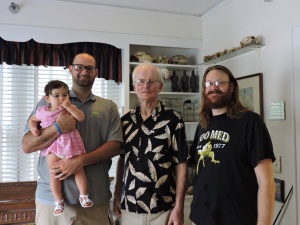 At this point in our visit I start realizing that Dr. Pritchard, as hospitable and inviting as he has been to me, is most interested in entertaining my wife and daughter. While Adam and I play with the turtles, Dr. Pritchard shows my family the inside of his actual house, where he and my wife discuss where in the world he has educated people on chelonians. She asks him to share his favorite country where he has taught children about turtles, and he replies that it is too difficult to choose. When my wife excitedly shared her story of our visit with her extended family, she loves mentioning how Dr. Pritchard was not impressed by my love for turtles, but rather by she and our daughter. I can’t argue, nor can I blame him.
At this point in our visit I start realizing that Dr. Pritchard, as hospitable and inviting as he has been to me, is most interested in entertaining my wife and daughter. While Adam and I play with the turtles, Dr. Pritchard shows my family the inside of his actual house, where he and my wife discuss where in the world he has educated people on chelonians. She asks him to share his favorite country where he has taught children about turtles, and he replies that it is too difficult to choose. When my wife excitedly shared her story of our visit with her extended family, she loves mentioning how Dr. Pritchard was not impressed by my love for turtles, but rather by she and our daughter. I can’t argue, nor can I blame him.
We finish the tour back at the yellow house as Adam and I wash our hands. He points out many more specimens in the back room, where they are repaired, labeled, etc. Adam also points to large storage buildings in the back yard where the “wet” specimens are kept. These are animals preserved in formaldehyde. We didn’t have time to view any of these animals, but tTR staff members Gerard Siatkowski and Chris Leone have previously gotten this opportunity.
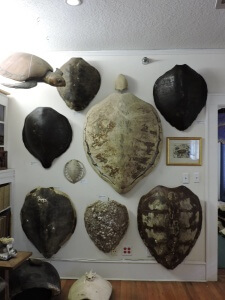 As we gather in the foyer to begin our goodbyes, Dr. Pritchard continues showing us artifacts. He also reminds us to sign our names in the visitors guestbook. Most of the time we were in this space, however, Dr. Pritchard shows colorful magazine and book covers and interesting artwork to my daughter. They really seem to share a real connection. I can’t help but appreciate how much this man cares about education. In addition to bringing a tear to my eye, I recall feeling so grateful.
As we gather in the foyer to begin our goodbyes, Dr. Pritchard continues showing us artifacts. He also reminds us to sign our names in the visitors guestbook. Most of the time we were in this space, however, Dr. Pritchard shows colorful magazine and book covers and interesting artwork to my daughter. They really seem to share a real connection. I can’t help but appreciate how much this man cares about education. In addition to bringing a tear to my eye, I recall feeling so grateful.
I am grateful for the assistance of Adam and Gerard in making the trip possible. I am grateful for the opportunity to share an amazing turtle-centric trip with my family. Most of all, I am thankful for Dr. Pritchard. In a place where just a few miles away, it cost hundreds of dollars to wait hours in the hot sun to get into the Peter Pan ride, this amazing Peter Pritchard tour is absolutely free. On top of that, this tour is led by a living legend. Just visiting this amazing place would have been a wonderful opportunity, but having him there, then getting to know what a sweet man he is, was truly the experience of a lifetime.
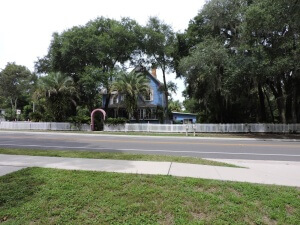 We finished our trip a few days later, on a flight out of Orlando at 6 in the morning. Like any responsible parents, we grabbed some pizza for breakfast at Sbarro. After eating, Shannon gets up and starts towards the terminal as I grab all of our bags. She calls for my attention from a few yards away, and when I look up she says “you’re not gonna believe this.” I followed her to see what was wrong. When I look up, she is using her iPhone to take a photograph of a huge advertisement with a photo of Dr. Pritchard, holding one of his Redfoot Tortoises.
We finished our trip a few days later, on a flight out of Orlando at 6 in the morning. Like any responsible parents, we grabbed some pizza for breakfast at Sbarro. After eating, Shannon gets up and starts towards the terminal as I grab all of our bags. She calls for my attention from a few yards away, and when I look up she says “you’re not gonna believe this.” I followed her to see what was wrong. When I look up, she is using her iPhone to take a photograph of a huge advertisement with a photo of Dr. Pritchard, holding one of his Redfoot Tortoises.
Anyone reading this surely knows that turtles and tortoises are not the sexiest subject going, not even in the conservation world, despite being the most endangered vertebrate group on the planet. This advertisement is right in the middle of a high traffic area in this international airport. The advertisement celebrates his accomplishment as an author, a conservation hero, and as a Floridian. Not that we needed it, but it really added an exclamation point at the end of a wonderful trip to the sunshine state that my family and I will never forget.
To see more pictures from the Chelonian Research Institute: Full Gallery
*All photos taken by Anthony and his wife.


